
Dialogue with the corporate strategy executives of Osaka Gas USA Corporation: Using AI to understand the momentum of decarbonisation — the potential of AI-driven management (Part 2 of 2)
2022-04-27
In this dialogue, we look back at a project in which PwC Consulting LLC (hereinafter, PwC Consulting) worked with members of Osaka Gas USA Corporation's (hereinafter OGUSA) Corporate Strategy department to create a set of indicators and build a dashboard for understanding decarbonisation indicators in the US. In this second half, we look at the challenges we faced during the data analysis phase and the ideal division of labour between artificial intelligence (AI) and humans.
Participants
Naohisa Hayashi
Senior Vice President, Corporate Strategy, Osaka Gas USA Corporation (at the time of the project)
Yohei Kagawa
Vice President, Corporate Strategy, Osaka Gas USA Corporation (at the time of the project)
Kenji Tsuzaki
Vice President, Corporate Department, Osaka Gas USA Corporation
Shimpei Miyoshi
Director, PwC Consulting LLC
Miki Edamoto
Senior Manager, PwC Consulting LLC
This article is based on a dialogue recorded in May 2021, between participants in Tokyo, Osaka and Kagoshima, Japan and Houston, Texas. The recording was conducted with all possible measures in place to prevent the spread of COVID-19.


Naohisa Hayashi, Senior Vice President, Corporate Strategy, Osaka Gas USA Corporation (at the time of the project)

Yohei Kagawa, Vice President, Corporate Strategy, Osaka Gas USA Corporation (at the time of the project)
Public opinion can be quantified.
Edamoto:
Now let's talk about the dashboard design and implementation phase. Our goal was to collect, analyse and visualise data on the momentum of decarbonisation in the world in a short period of 11 weeks. Generally speaking, quantifying unstructured data, such as data on social media, and identifying indicators of momentum in numerical terms is very challenging. While it makes sense that if text on social media can be quantified, trends can be identified, I think you had some concerns and worries about whether it was really possible to analyse such vast amounts of information.
Hayashi:
You’re right. The question of whether unstructured data could really be quantitatively evaluated was our main interest, and at the same time, our main concern. We knew that it was necessary to understand changes in the attitudes of the younger generations as social trends, but when Ms. Edamoto and the other members of the team suggested that we should try to quantify these changes, we honestly wondered whether it would be an expedient way of acquiring and analysing the data and whether the data contents might not be arbitrary. However, we decided to take on the challenge.
Miyoshi:
Using conventional operational methods such as human visual observation of social media and word-of-mouth information to understand public opinion inevitably results in localised sampling. It’s also undeniable that the specific data that gets picked up is influenced by the individual person in charge. The good thing about AI is that it can comprehensively and objectively categorise topics and their composition ratios. Even so, due attention should be paid to the population of social media users as a data source and the keywords used to extract the comments to be analysed.
Edamoto:
In our project, we spent a lot of time determining the keywords to be monitored when analysing posts on social media.
Kagawa:
That’s right. We considered various keywords related to environmental issues and climate change, such as ‘fossil fuels’, ‘Paris Agreement’ and ‘decarbonisation’, but in the end we chose the hashtag #GreenNewDeal, because the Green New Deal is an environmental policy of great interest in the US. We thought that we could get a lot of data on the number of people posting their opinions on social media, as well as comments for and against the policy. One of the objectives of this project was to first experience AI analysis, so we chose the keyword without thinking too deeply.
Edamoto:
This was a kind of trial, and it was very important to have a ‘just do it’ attitude. There were approximately 175,000 posts using the hashtag #GreenNew Deal from 2015 to 2019 in the US alone. Mr. Miyoshi took the lead in quantifying this huge amount of information.
Miyoshi:
Yes. We used two approaches to natural language processing in this project. One was sentiment analysis to determine whether each statement was positive or negative, using VADER, a specialised algorithm for social media in English, and the other was the development of a categorisation method from the perspective of STEEP*, which is unique to our project. The statements about the Green New Deal were diverse and included topics related to politics, human rights, well-being, social infrastructure, the environment and many others. To classify these correctly, we needed an understanding of US society and industry knowledge in addition to technology, so the algorithm is full of our expertise.
*Society (including culture and lifestyle), technology, economics, environment and politics
Edamoto:
Mr. Tsuzaki, you’ve studied physical statistics and have a deep knowledge of technology. What did you think when you saw the results of the natural language processing?
Tsuzaki:
My own past experience was limited to analysing quantified structured data, so I found this method of analysing unstructured data fresh and new. In the US, we frequently see examples of instant analysis of voice and chat utterances in various aspects of daily life for use in various services. Therefore, I had the impression that advanced natural language processing technology had been established. I was genuinely impressed that such technology had reached a level where it could be applied to the analysis of people's emotions on social media.
Edamoto:
In the US, we see some trends on social media that are not so common in Japan. People of all generations tend to express their emotions in a straightforward manner; for example, candidates’ comments in televised presidential debates ‘go viral’, announcements of events organised by environmental groups spread around the world, and users who have installed solar power systems post the benefits of it on the Internet every day. Images and videos are often posted without text, and evoke our emotions in a variety of ways.
Miyoshi:
Yes. And in response to such situations, analysis methods are also becoming more diverse. For example, image analysis enables us not only to identify the subject of images (dogs, cats, etc.), but also to determine the type of setting and estimate attributes (such as gender or age) and emotions from people's faces. For voices, technology is also being developed to not only transcribe voice data into text, but also to estimate the speaker’s emotions based on voice colour and wavelength. Although only textual data was analysed in this project, we hope to make further use of images and video in the future to better understand the opinions of the world.
Working with AI: Collaboration, not delegation
Edamoto:
In analysing structured data (facts) and unstructured data, which we used to quantify public opinion, the goal was to use correlation and decision tree analysis to identify leading indicators that could drive momentum for decarbonisation. What did you discover in the process?
Kagawa:
As the analysis was calculated by a machine, the correlations among the data themselves were facts. But it was very difficult for me to understand the reason why there were correlations. I felt that additional elements such as human logic were necessary to understand why correlations were found in this group of data. On the other hand, I thought the approach of quantifying text data, which was originally unstructured, and analysing correlations with other quantified data was very innovative, and I had the impression that it would be interesting to use as a future data analysis method. What about you, Mr. Tsuzaki?
Tsuzaki:
Like Mr. Kagawa, I had the most difficulty in understanding why the decarbonisation momentum was linked to a certain indicator. In particular, it was difficult to find leading indicators that showed a high correlation with the fuzzy subject of ‘momentum’. With so many indicators showing some degree of correlation, we wondered which indicators we should focus on. That decision is likely to be the key, I think.
Edamoto:
Decision tree analysis is an algorithm that determines conditions of increasing probability and their thresholds. I myself understand in my head that the AI is presenting results that are difficult to discover by human analysis, but during the project I felt that something was off from an industry convention and business perspective, and carried out several trials. In fact, I found some bizarre values...but they have of course been corrected.
Hayashi:
That’s a relief. (Laughs)
Miyoshi:
We can say that correlation analysis and decision tree analysis are a type of ‘discovery-based analysis’ using big data and AI. While this has the advantage of being able to comprehensively confirm the strength of relationships among events and discover unexpected relationships among events, AI only discovers relationships from the given data and cannot reliably detect the meanings, causes, or effects of such relationships. Therefore, if the results of the analysis do not conform to the human hypothesis, the results may not be convincing and may be dismissed as some kind of mistake. This disadvantage has been an obstacle in many projects. If we pursue only results that satisfy our hypotheses, we will get only known results, which would be meaningless. This is, however, a pattern that we often fall into. I think it is important to have a practical view that the role of AI is to suggest exhaustive possibilities, and the role of humans is to interpret the results and link them to suggestions, and that AI and humans are supposed to collaborate.
Edamoto:
When AI and humans collaborate, it is essential for humans to be flexible in their thinking regarding, for example, the extent to which they can accept the emerging possibilities that the AI detects. This may be the key to using AI successfully.
Miyoshi:
There is no doubt that the use of AI will be a key factor for further business growth. We think that the potential will be even greater if AI is used not only by individual staff and functions, but also across the entire company. To achieve this, we will need to continue our transformation efforts, such as ensuring that management clearly communicates the message of transforming the company by using AI throughout the company, fostering an organisational culture that allows trial and error, setting objectives for the use of AI and considering risk-hedging policies from the early stages of the process. Establishing a company-wide, cross-sectional organisation to promote the use of AI may also be an effective approach. Recently, more and more businesses seem to be aiming to develop their own in-house data scientists and to become capable of autonomously promoting data utilisation projects, as well as utilising external personnel with data analysis skills on an ad-hoc basis.

Kenji Tsuzaki, Vice President, Corporate Department, Osaka Gas USA Corporation


Shimpei Miyoshi, Director, PwC Consulting LLC

Miki Edamoto, Senior Manager, PwC Consulting LLC
Building a corporate culture of bold and enterprising data analysis to interpret social changes
Edamoto:
So, what are your final thoughts looking back on the project?
Hayashi:
Looking at the dashboard we used to visualise social momentum regarding decarbonisation, we felt that it could contribute to the objective of ‘keeping up with social change’, which was the starting point of our efforts. We also received positive feedback from the company president. It would be nice if we could target specific keywords that could increase the momentum of decarbonisation, such as ‘methanation’, ‘carbon dioxide capture, utilisation and storage’ (CCUS), ‘hydrogen’ and ‘renewables’ and use them to identify business opportunities, but through this project, we have realised that the right answer cannot be found directly and that we need to be aware of a broad range of latent possibilities.
We were also able to experience the effectiveness of the latest technology. In the future, we believe it will be important for our organisation as a whole to foresee signs of change by increasing accuracy, trying new approaches and inviting unique ideas through discussions within the company.
Kagawa:
The design and implementation of a dashboard was a pilot initiative carried out under time and budget constraints, so I feel that there is still room for further ingenuity and effort in terms of scrutinising the analysis targets and the scope of data to be correlated. I believe that people’s attitudes towards environmental policy have changed dramatically around the world during the one year we have been working on the project. The social environment and awareness seem to have changed to such an extent that now we cannot go one day without hearing about decarbonisation or climate change issues. As our company president said, ‘The world is dynamically changing and what is considered good now may soon become obsolete.’ With this statement in mind, we would like to be even more vigilant.
Tsuzaki:
After participating in this project, I realised that data analysis methods have developed dramatically. If machines could take on the role of supplementing the analysis and scenario studies conducted by humans, I think even more effective approaches would be possible. I think this technology can be applied in a wide range of fields, so I hope we can consider using it in other businesses within the group. I believe that we can get closer to a better vision of the future by using AI and other digital technologies.
Miyoshi:
AI and big data analysis methods and business applications are evolving every day, and while we have only covered the basics of social media analysis, including the extraction of trends over time from people’s actual statements, we can also extract highly suggestive insights by using applied analysis that focuses more on users. For example, by analysing the poster’s own attributes, hobbies and preferences, trends in follows and followers, detailed inflow routes and events that trigger emotional shifts (positive or negative), I believe it will be possible not only to understand decarbonisation momentum, but also to achieve more in-depth prediction of future signs from a human perspective.
AI is not only good at social media analysis, but also at combining different data sources and data types to discover multifaceted relationships. Therefore, by accumulating large amounts of data and improving analysis models, it should be possible to improve the accuracy and speed of decision-making. PwC Consulting’s Data & Analytics team will continue to provide support for business issues in a variety of areas, including the collection of necessary data, the design and implementation of appropriate AI utilisation approaches, the development of IT infrastructure such as data platforms that support these approaches, and organisational and human resource development.
Edamoto:
There is no indication that COVID-19 will be contained, and the future of the business environment is likely to remain unclear and uncertain. However, we believe that continuing and developing initiatives such as this project will bring about behavioural change in businesses and will be positive for future operations. What kind of future awaits us once the cycle of accumulating and analysing fresh information by using flexible thinking has become established in society? I’m really looking forward to seeing it. Thank you very much for this valuable dialogue.
Participant profile
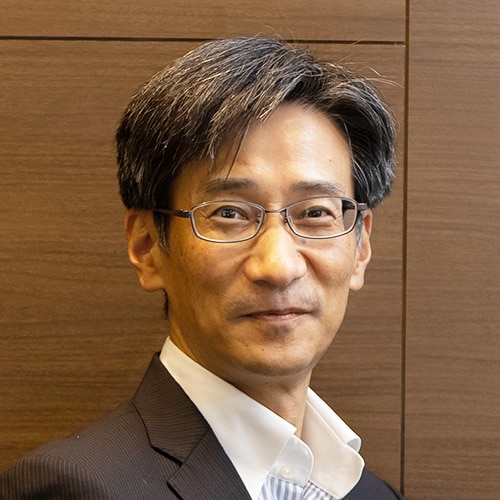
Naohisa Hayashi
Senior Vice President, Corporate Strategy, Osaka Gas USA Corporation (at the time of the project)
Naohisa Hayashi joined Osaka Gas Co., Ltd. in 1993. After working in the Pipeline Business Unit, HR, the secretariat and the Residential Energy Business Unit, he was seconded to Osaka Gas USA in 2018. He is currently in charge of HR and general affairs, corporate strategy, IT, accounting and finance and risk management.
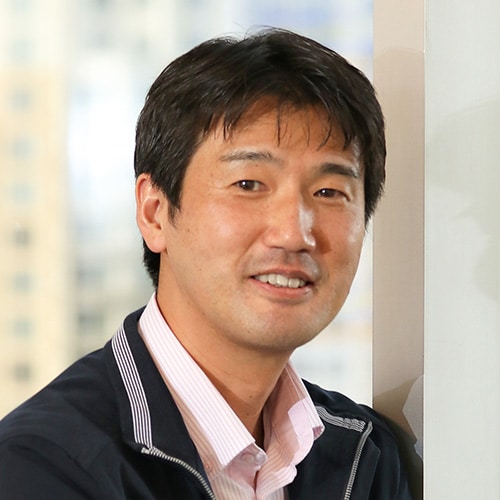
Yohei Kagawa
Vice President, Corporate Strategy, Osaka Gas USA Corporation (at the time of the project)
Yohei Kagawa joined Osaka Gas Co., Ltd. in 2000. After working in the Residential Energy Business Unit, corporate planning, IR and overseas planning, he was seconded to Osaka Gas USA in 2018. He is currently involved in planning work, organisational issues, cross-sectional activities and promotion of digitalisation.
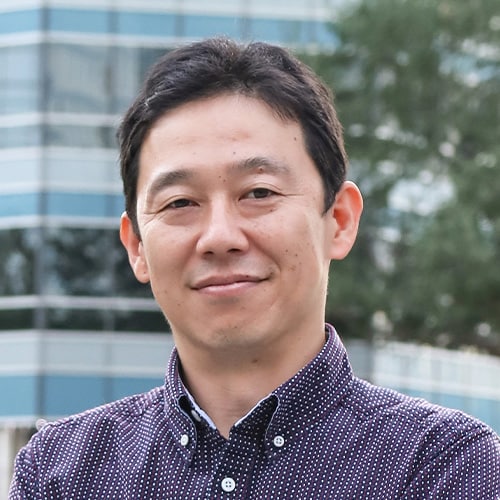
Kenji Tsuzaki
Vice President, Corporate Department, Osaka Gas USA Corporation
Kenji Tsuzaki joined Osaka Gas Co., Ltd. in 2004. In the Information/Communication Systems Department, he was in charge of driving operational improvements using financial engineering and mathematical optimisation techniques. In 2016, he was seconded to Osaka Gas USA. He is currently engaged in establishing the commodity trading platform, as well as risk management operations.
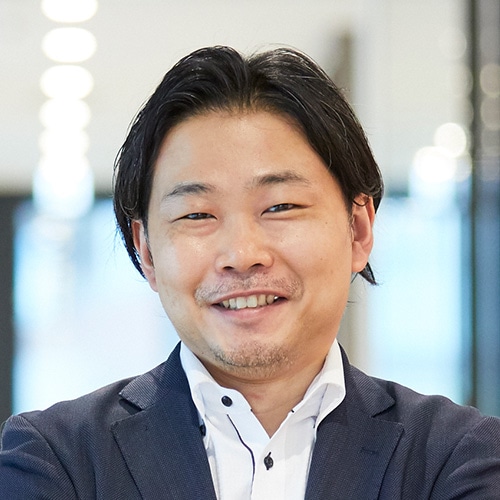
Shimpei Miyoshi
Director, PwC Consulting LLC
Prior to joining PwC Consulting, Shimpei Miyoshi worked for a major Japanese automotive manufacturer and a foreign-headquartered system instrumentation analytics vendor.
While working in production management and corporate planning at these companies, he gained experience in leading data analytics utilisation projects in a variety of industries and for a variety of business issues. At PwC Consulting he has been involved in a number of artificial intelligence (AI) and machine learning projects covering stages from conceptualisation for use in business, to PoC testing and standardisation.
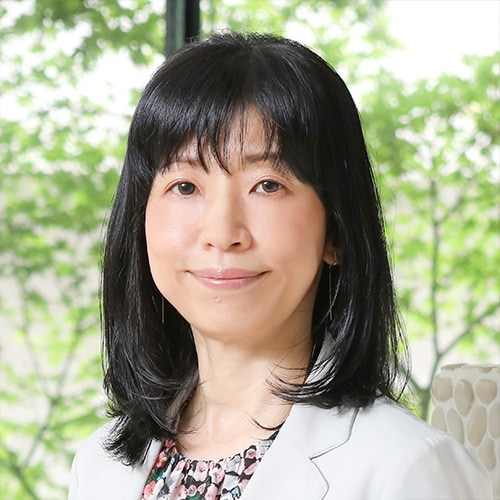
Miki Edamoto
Senior Manager, PwC Consulting LLC
Prior to joining PwC Consulting, Miki Edamoto worked for a Japanese electronics manufacturer. In the overseas sales department, she was engaged in operational reforms and new business development, and led an enterprise resource planning system implementation project. After joining PwC Consulting, she was initially involved in business process reengineering (BPR) and global SAP implementation projects. Recently she has been involved in a number of projects which focus on future-oriented new business development mainly for clients in the oil and gas industry and the electric power industry.
In July 2016, she was seconded to the Houston, Texas office of PwC US for two years to support the global operations of Japanese companies and their affiliates, including Osaka Gas USA.
* Company names, job titles, interview contents etc. are current as of the time of publication.
Our team
Miki Edamoto
Director, PwC Consulting LLC




